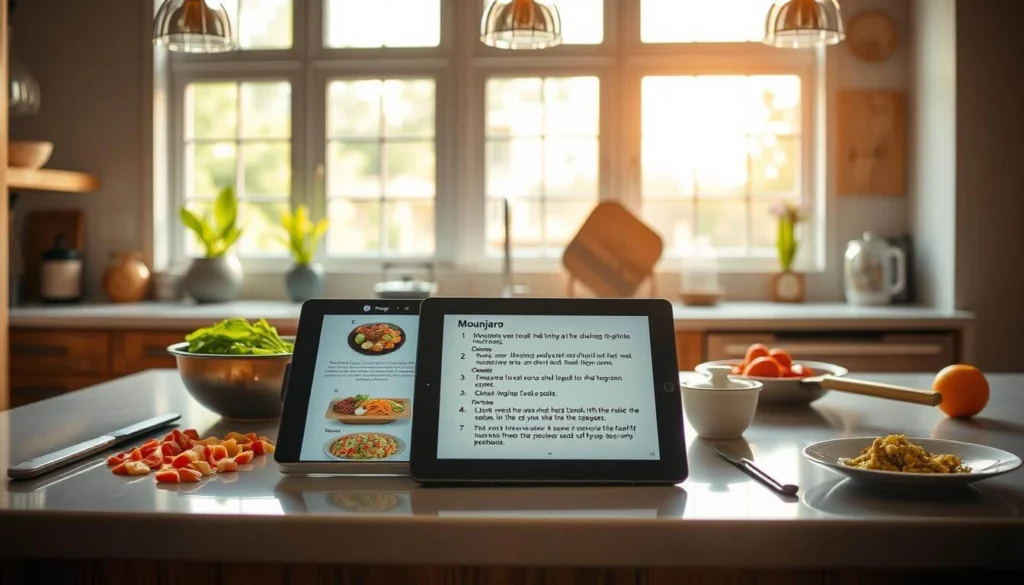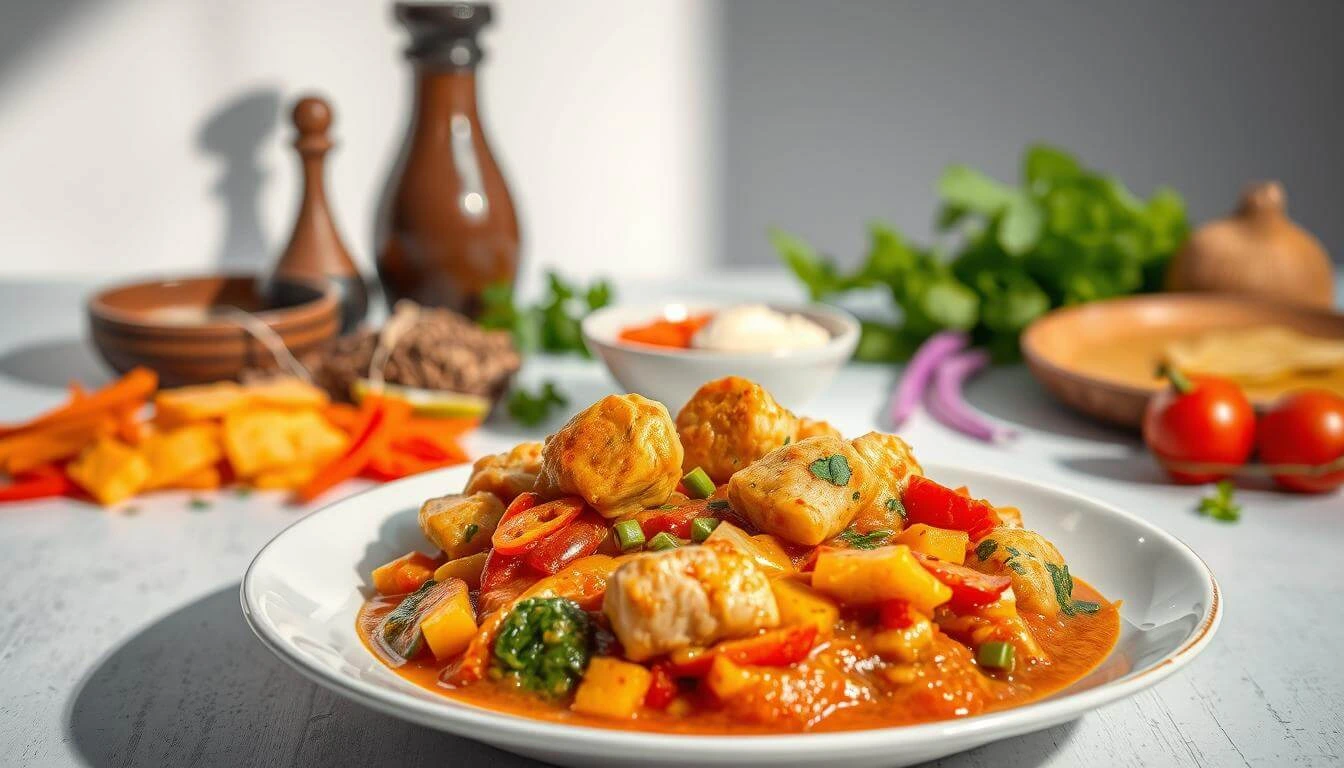Looking for a flavorful and healthy dinner option? The Mounjaro recipe offers a perfect balance of taste and nutrition. It’s an easy-to-prepare dish with great health benefits, making it a smart addition to any balanced diet.
This guide will walk you through what Mounjaro is, its cultural background, health benefits, preparation steps, and storage tips.
Key Highlights
- Discover a nutritious and flavorful meal option
- Learn how to prepare the Mounjaro recipe step by step
- Understand its health benefits and cultural roots
- Find easy substitutions for dietary needs
- Enjoy a wholesome meal that fits a healthy lifestyle
What Is the Mounjaro Recipe?
The Mounjaro recipe is a traditional meal known for its rich flavor and nutritional value. It has roots in various ancient cuisines and continues to be a symbol of unity and celebration in many cultures.
Cultural Relevance and Origin
Mounjaro is more than just a dish—it carries cultural weight. Traditionally served during gatherings or special occasions, it represents togetherness and shared heritage. The ingredients and preparation techniques reflect regional customs and culinary wisdom.
Traditional vs. Modern Variations
While the core of the recipe remains intact, modern adaptations have emerged:
- Use of alternative ingredients to fit specific diets
- Faster cooking techniques to save time
- More spices and herbs for enhanced flavor
These changes allow the dish to remain relevant while retaining its traditional essence.
Key Ingredients and Health Benefits
The Mounjaro recipe combines fresh vegetables, lean proteins, and whole grains, making it both flavorful and nourishing.
Main Ingredients
- Fresh vegetables (e.g., leafy greens, bell peppers): rich in vitamins, fiber, and minerals
- Lean proteins (e.g., chicken or fish): build muscle and support satiety
- Whole grains (e.g., quinoa, brown rice): provide complex carbohydrates and energy
A registered nutritionist might recommend meals like Mounjaro for their balance of macronutrients and micronutrients.
Nutritional Profile
A typical serving of Mounjaro includes:
- High levels of vitamins A and C from vegetables
- Omega-3 fatty acids from fish
- Fiber and complex carbs from whole grains
Where to Find Ingredients
Look for ingredients at:
- Local farmers’ markets
- Health food stores
- Organic or specialty grocery stores
Tip: Choose locally sourced or organic items for the best flavor and nutritional value.
How to Prepare the Mounjaro Recipe
Here’s a simple step-by-step guide to help you make a delicious Mounjaro meal.
Ingredients List
- 1 cup Mounjaro grain (such as quinoa or bulgur)
- 2 cups vegetable broth or water
- 1 tablespoon olive oil
- 1 small onion, finely chopped
- 2 garlic cloves, minced
Cooking Instructions
- Heat olive oil in a large pan over medium heat.
- Sauté the chopped onion until translucent.
- Add the minced garlic and cook for 1 minute.
- Stir in the Mounjaro grain.
- Add broth or water and bring to a boil.
- Reduce heat to low, cover, and simmer for 20–25 minutes or until liquid is absorbed.
Important: Let the grains cook slowly to unlock maximum flavor and texture.

Serving and Presentation Tips
Enhance your dish with thoughtful presentation:
- Garnish with chopped parsley or cilantro
- Serve with roasted vegetables or a fresh side salad
- Add a splash of lemon juice for brightness
Presentation matters—make it visually appealing for a better dining experience.
Usage Guidelines and Natural Substitutes
To enjoy the full benefits of Mounjaro, follow smart usage, storage, and substitution practices.
Recommended Serving Frequency
- 2–3 times per week as a main meal
- Once a week as a flavorful, healthy side dish
Storage and Shelf Life
Store leftovers in an airtight container at 40°F (4°C) or below. When properly stored, the dish lasts up to 3 days.
Tips for Storage:
- Always label the container with the preparation date
- Reheat to an internal temperature of 165°F (74°C) before consuming
Natural Substitutes for Dietary Needs
Here are some common substitutions:
- Gluten-Free: Use quinoa or almond flour instead of wheat-based grains
- Vegan: Use vegetable broth or mushroom broth instead of chicken broth
These swaps make the dish more accessible for various dietary lifestyles.
Concluding
The Mounjaro recipe is a satisfying and nutritious meal that suits modern wellness goals. It combines essential nutrients with cultural richness, offering a dish that’s both functional and flavorful.
With wholesome ingredients, proper cooking, and mindful servings, this recipe can elevate your meal planning while supporting your health.
Add Mounjaro to your weekly routine and enjoy a meal that nourishes both body and spirit.
Frequently Asked Questions
What is the Mounjaro recipe and is it a healthy dinner option?
Yes, it’s a traditional recipe made with nutritious ingredients like vegetables, lean protein, and whole grains.
Can I modernize the Mounjaro recipe?
Absolutely. You can use new cooking techniques or alternative ingredients to suit your dietary preferences.
Where can I find the ingredients?
Look for them at health food stores, farmers’ markets, or grocery stores that stock fresh, organic produce.
How do I cook the Mounjaro recipe?
Follow the detailed steps above to prepare and cook the dish properly.
How long does it last and how should I store it?
Refrigerate for up to 3 days in an airtight container. Reheat to 165°F before eating.
Are there dietary substitutes available?
Yes, gluten-free and vegan substitutes are listed in the guide to help adapt the recipe.
How often can I eat this dish?
2–3 times a week is ideal for balanced nutrition.
What’s a great drink to pair with the Mounjaro recipe for a complete, healthy meal?
A perfect match for your Mounjaro recipe is the Brazilian Mounjaro, a natural, refreshing beverage that complements the dish’s flavors while boosting your energy and hydration.
Can I use either traditional or modern cooking methods?
Yes, both approaches work well and can result in a delicious, nourishing meal.

